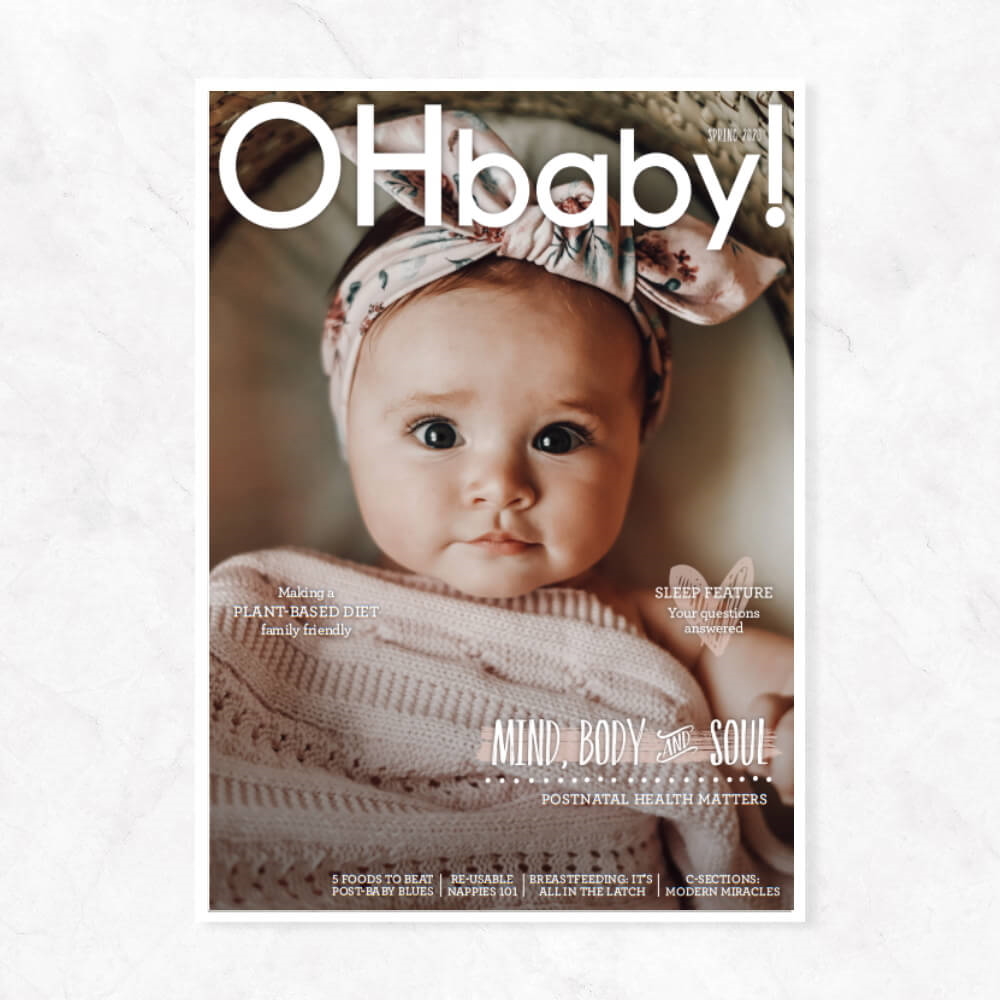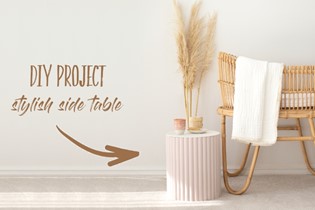Best tips for breastfeeding success

Midwife and lactation consultant Stephanie Callaghan Armstrong shows us how to get our best latch on for breastfeeding success!
Congratulations on having your precious baby! It might seem like breastfeeding should be the most natural thing in the world, but for many mum and baby duos, it can actually take a bit of learning for you both.
After babies have their skin-to-skin time following birth (recommended whenever possible, including after a Caesarean section), some latch straight on to the breast like it’s the easiest thing ever, and neither of you ever look back. Others may need to have support and a few attempts to work out the feeding positions that work best, depending on your nipple shape and size and the anatomy of baby’s mouth.
Once you get over the initial hurdles, it gets easier and it’s so handy to have your breast milk right on tap for baby, always at just the right temperature, no sterilisation needed. Giving your baby milk made by you that’s just right for them can be the most rewarding and precious bonding experience. Our bodies are incredible – we even tailor-make our milk for premature babies to give them higher levels of proteins, fats and immunity.
Breast milk is a superfood for babies. It contains everything baby needs to grow, has lifelong health benefits for both you as the producer and for your baby, and helps protect your little one from viruses and bacteria.
It’s all in the latch

Latching correctly is super important so that baby is able to stimulate the areola of your nipple and compress the alveoli (or milk-making buds) with her mouth and send a message to your brain to make milk. The process of supply and demand is a miracle; milk isn’t just stored in our breasts ready to go. The alveoli has some storage capacity, but milk is also made as you empty your breasts. It’s a fine balance of correctly latching baby and removing milk, the birth process and our hormones that establish and make the perfect supply for baby. So incredible!
There’s no ‘right’ way to breastfeed, but the golden rules are:
✔ Make sure baby latches well.
✔ Keep baby’s tummy toward your tummy so her head is facing the breast, not twisted.
✔ Support baby’s back and neck.
Tips and tricks to help make it easier
❧ Firstly, get comfortable with a breastfeeding pillow or cushion/s. A foot stool helps bring baby up to your breast height so you’re not leaning down, which can give you a really sore neck and back.
❧ Have a water bottle and maybe a snack handy, plus your phone if you’re using it to keep track of feeding times.
❧ Make sure baby opens her mouth wide as you latch. Babies have what is called a rooting reflex, designed to cause them to open their mouth when they touch your nipple. Tickle the corner of your baby’s mouth and you’ll see her shake her head a little and open her mouth. Be ready to bring her onto the nipple with your nipple pointing to the roof of her mouth.
❧ Make sure baby has her tummy facing yours so her neck isn’t twisted, and gently wedge your nipple so it’s the same shape as her mouth. This makes it easier for her to latch on to as much of the areola as possible.
❧ If your nipple is ‘wedged’ into the same shape as baby’s mouth, she can get a good latch more easily. If it’s wedged in the wrong shape, it’s harder for her to compress and latch.
❧ Once baby starts suckling and swallowing, hold the breast in a wedge for a short while longer (while baby is young) until you can see she has a good stable latch.
❧ Once latched, use your hand to support baby’s head. If you take away your hand, baby can slip down the nipple, which may cause baby to painfully chew and damage the nipple ends.
❧ Make sure baby can breathe through her nose by positioning her head. Babies’ cute little noses are designed to fit snugly against the breast and allow them to breathe out the side.
Try not to compress your breast to create a breathing space as you feed as this can restrict milk flow and circulation, and even cause mastitis or blocked ducts.

A deep latch
A deep latch is when baby has latched well onto the breast. It shouldn’t hurt when she is suckling and her top and bottom lips are rolled back and flanged open (a bit like a goldfish’s mouth!). You’ll be able to hear her swallowing and her sucking looks rhythmic. Usually the jaw is moving right back to baby’s ear.
Your nipple should be right back in baby’s mouth where it’s safe from being damaged. This will allow baby to efficiently stimulate your milk supply by removing milk effectively and sending your brain the message to make more milk. Baby should have a good suction and have a ‘suck, swallow, breathe’ rhythm.
 A shallow latch
A shallow latch
A shallow latch is when baby is mostly attached to the nipple not the areola (the brown part beyond the nipple). Baby’s suckling will be in more of a chewing motion, which is often painful. Her lips may be turned inward and you may hear clicking sounds, see dimpling in the cheeks as she sucks, plus it just won’t ‘feel right’. In this case, always take baby off the breast and reattach her to prevent nipple damage. Pop your pinky in the corner of her mouth to release the suction and avoid nipple damage as she comes off.
If you’re unsure if baby is latching well, ask your midwife to spot check you – you can never ask for help too many times, so don’t hold back! Correct latching in the early days of feeding colostrum before your milk comes in (also called Lactogenesis One), sets up the blueprint for your milk supply into Lactogenesis Two and then Three. As your supply establishes it’s then maintained, depending on how much milk baby needs.
When baby comes off the breast, your nipple should be its usual rounded shape. If it’s pinched at the tip and it was painful to feed, your baby may not have been correctly latched.
Latch Troubleshooting
An incorrect or shallow latch also means baby is more likely to damage your nipple, which can be very painful and one of the biggest reasons that Kiwi mums give up breastfeeding early. Here are a few things to consider or look out for while you’re establishing breastfeeding:
❧ Oral examination: Your midwife or lactation consultant will do an oral examination of baby’s mouth to check the palate for a cleft palate or a high palate, and for any tongue or lip tie that may be causing latching and suction issues. Some babies may need a tongue or lip tie release, called a frenotomy, which can result in more successful and comfortable latching and feeding.
❧ Possible infection: Damaged nipples can also be an entry point for yeast or bacterial infections, such as thrush or mastitis, in the nipple and breast, so it’s very important to try to get it right from the very first feed. Expressing and rubbing a little colostrum on your nipples after feeds, or using a lanolin nipple cream, can help soothe and heal your nipples. If you suspect infection, it’s important to seek help from your midwife or GP.
❧ Lower muscle tone: Some babies have lower muscle tone after birth, particularly if they were born prematurely or have special needs. They may latch on, but slip off easily or not sustain suckling. There are special techniques and positions to support baby to feed if she is slipping down. Ask for support early on from your midwife or lactation consultant if your baby is not sustaining strong suckling during feeds.
❧ Cranial osteopathy: Seeing a cranial osteopath who specialises in babies may help jaw tightness if baby is having difficulty latching. My eldest girl was a low birth weight baby, and after several weeks of expressing and tube feeding because she wasn’t strong enough to suck, we took her to a cranial osteopath and she breastfed well for the first time right there in the clinic! After that experience, I’m convinced it’s effective!
❧ Engorged breasts: Engorgement of breasts when your milk comes in can make latching difficult because the areola becomes swollen and hard, and baby cannot compress and get good suction to latch. Hand-expressing to soften your areola may help, or try using a breast pump for a few minutes before feeding. Breastfeeding every few hours from birth helps to reduce the risk of engorgement.
❧ Flat or inverted nipples: If you have flat or inverted nipples it may also be more difficult for baby to latch on as the nipple is unable to be drawn back deeply into the baby’s mouth. However, don’t give up or think you can’t breastfeed! Before you give birth, talk to your LMC about your nipples. Gently rolling your nipples out during pregnancy can help, and you can also buy breast shells to wear inside your bra to help draw your nipples out. When baby is born, pumping and hand-expressing before feeds can help too. Over time, breastfeeding may actually permanently bring your nipples out.
❧ Nipple Shields: Occasionally your LMC or lactation consultant may suggest using a nipple shield to help in latching for flat or inverted nipples, for a baby who’s not staying latched, or to make it bearable if you’re in pain when feeding.
Ideally, only use shields as a last resort and for a very short time as they may interfere with the milk-making message your baby suckling on the breast sends to the brain. Always express several times a day after feeding if using nipple shields, to prevent your milk supply dropping.
Most importantly, if baby isn’t latching well, maintain your milk supply by pumping regularly so your baby at least has breastmilk. You can work on the latching with each feed, but try not to stress. Try to give baby any supplementary feeds without teats as they can interfere with latching, the same with using dummies/soothers (as recommended by the World Health Organisation Code Ten Steps to Successful Breastfeeding).
Keep trying, and don’t be afraid to ask for help! Get good professional support and/or have your partner/support person help you at home so you can rest between feeds and focus on getting breastfeeding established. All the best amazing mamas! Kia kaha, you’ve got this.

We often associate breastfeeding with the traditional babe-in-arms position, also called the ‘cradle hold’. However, there are many other positions that can give a deeper latch, and that you may find easier, especially at the beginning when you are learning to breastfeed.
Try some of the positions illustrated below to help you discover what’s most comfortable, what works best for you and how your baby feeds best. When I breastfed my own four babies, every one of them was different. Some of my babies were challenging to feed, even though I’m a lactation consultant and midwife! Every baby is unique and even if you’re having your second or third baby, breastfeeding a newborn can still feel brand new all over again.

Cradle and cross-cradle positions
If you can, it’s a good idea to master a few breastfeeding positions, including the cradle hold (it’s a bit tricky to breastfeed baby in public while lying down!). Many women feel more comfortable breastfeeding in front of others in the cradle hold, and find it easier to latch baby correctly. The cross-cradle hold is similar to the cradle hold, but you use one hand to help wedge your breast to assist baby to latch. Elevating baby’s head can help if she is prone to reflux or takes in too much air with feeds.

The football hold
This is a good way to help your baby latch if you’re finding it hard to hold her while creating the wedge breast shape. It also gives your baby stability once suckling so she doesn’t slip off so easily. If you have had a C-section, this position can be good for keeping baby off your sensitive scar.
Lying down positions
‘Laid back’ or ‘biological nursing’ has become more popular, especially for babies who have latching difficulties. This position helps baby’s jaw and tongue to naturally come forward with gravity, and helps with a deeper latch. Babies with tongue tie or premature babies with a weaker suck can benefit from this position too. It can be great for skin-to-skin bonding and for calming baby. In my experience, some mums love it but others can find it trickier, especially if  they have larger breasts as it can be hard for baby to breathe.
they have larger breasts as it can be hard for baby to breathe.
Side-lying position can be a restful way to feed (especially if Mama is tired!) but baby can be prone to slip down the nipple, so often it’s easier once breastfeeding is a little more established.
Stephanie Callaghan Armstrong is a mum of five including her stepson, and an LMC Midwife and Lactation Consultant with over 20 years’ experience. She and her husband Dr Mikey also own BabyMed NZ, their breast pump sales, rental and baby products business. Find them at babymed.co.nz.

AS FEATURED IN ISSUE 51 OF OHbaby! MAGAZINE. CHECK OUT OTHER ARTICLES IN THIS ISSUE BELOW

















